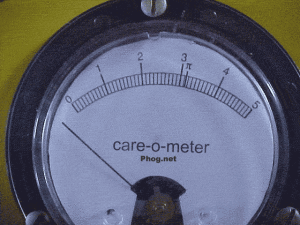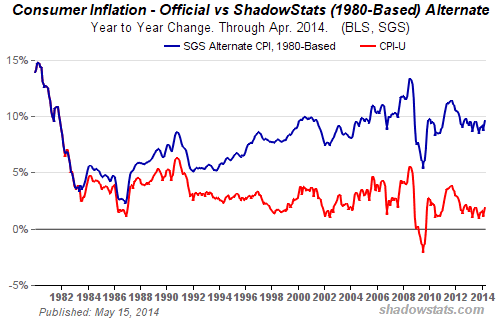A Toxic Work World
A Toxic Work World
Sunday New York Times Reprint By ANNE-MARIE SLAUGHTERSEPT. 18, 2015 FOR many Americans, life has become all competition all the time. Workers across the socioeconomic spectrum, from hotel housekeepers to surgeons, have stories about toiling 12- to 16-hour days (often without overtime pay) and experiencing anxiety attacks and exhaustion. Public health experts have begun talking about stress as an epidemic. The people who can compete and succeed in this culture are an ever-narrower slice of American society: largely young people who are healthy, and wealthy enough not to have to care for family members. An individual company can of course favor these individuals, as health insurers once did, and then pass them off to other businesses when they become parents or need to tend to their own parents. But this model of winning at all costs reinforces a distinctive American pathology of not making room for caregiving. The result: We hemorrhage talent and hollow out our society. A Toxic Work World Can only the young and childless truly succeed in their careers? Leave a question for Anne-Marie Slaughter in the comments with this story or on the Times Opinion Facebook page. She will respond to a selection of reader questions next week. To begin with, we are losing women. America has unlocked the talent of its women in a way that few nations can match; girls are outpacing boys in high schools, universities and graduate schools and are now entering the work force at higher salaries. But the ranks of those women still thin significantly as they rise toward the top, from more than 50 percent at entry level to 10 to 20 percent in senior management. Far too many discover that what was once a manageable and enjoyable work-family balance can no longer be sustained — regardless of ambition, confidence or even a partner who shares tasks equally. Every family’s situation is different; some women may be able to handle with ease conditions that don’t work for others. But many women who started out with all the ambition in the world find themselves in a place they never expected to be. They do not choose to leave their jobs; they are shut out by the refusal of their bosses to make it possible for them to fit their family life and their work life together. In her book “Opting Out? Why Women Really Quit Careers and Head Home,” the sociologist Pamela Stone calls this a “forced choice.” “Denial of requests to work part time, layoffs or relocations,” she writes, will push even the most ambitious woman out of the work force.
A young lawyer I know from Virginia was offered a general counsel position, which she determined she could take but only if she could work from home one day a week to be with her two children. Her employer refused. Still another woman wrote to me about her aspiration to an executive-level position and the predicament of doing so with a 2-year-old at home: “The dilemma is in no way the result of having a toddler: After all, executive men seem to enjoy increased promotions with every additional offspring. It is the way work continues to be circumscribed as something that happens ‘in an office,’ and/or ‘between 8–6’ that causes such conflict. I haven’t yet been presented with a shred of reasonable justification for insisting my job requires me to be sitting in this fixed, 15 sq foot room, 20 miles from my home.” Every weekday, get thought-provoking commentary from Op-Ed columnists, The Times editorial board and contributing writers from around the world. The problem is even more acute for the 42 million women in America on the brink of poverty. Not showing up for work because a child has an ear infection, schools close for a snow day, or an elderly parent must go to the doctor puts their jobs at risk, and losing their jobs means that they can no longer care properly for their children — some 28 million — and other relatives who depend on them. They are often suffering not only from too little flexibility but also too much, as many low-wage service jobs no longer have a guaranteed number of hours a week. This looks like a “women’s problem,” but it’s not. It’s a work problem — the problem of an antiquated and broken system. When law firms and corporations lose talented women who reject lock-step career paths and question promotion systems that elevate quantity of hours worked over quality of the work itself, the problem is not with the women. When an abundance of overly rigid workplaces causes 42 million American citizens to live day to day in fear that just one single setback will prevent them from being able to care for their children, it’s not their problem, but ours.
THE problem is with the workplace, or more precisely, with a workplace designed for the “Mad Men” era, for “Leave It to Beaver” families in which one partner does all the work of earning an income and the other partner does all the work of turning that income into care — the care that is indispensable for our children, our sick and disabled, our elderly. Our families and our responsibilities don’t look like that anymore, but our workplaces do not fit the realities of our lives. Irene Padavic, a Florida State sociologist, Robin J. Ely, a Harvard Business School professor, and Erin Reid from Boston University’s Questrom School of Business were asked to conduct a detailed study of a midsize global consulting firm where top management thought they had a “gender problem.” The firm had a paucity of women at the highest levels — just 10 percent of partners were women, compared with nearly 40 percent of junior associates. After careful study, Professors Padavic, Ely and Reid found that an equal number of men and women had left the firm in the preceding three years, a simple fact that contradicted management’s women, work and family story. Some of the men also left because of the long hours; others “suffered in silence or otherwise made do.” The firm’s key human resources problem was not gender, as management believed, but rather a culture of overwork. The firm’s leadership resisted these findings. They didn’t want to be told that they needed to overhaul their entire organizational philosophy or that they were overpromising to clients and overdelivering (for example, making hundred-slide PowerPoint presentations that the client couldn’t even use). They wanted to be told that the firm’s problem was work-family conflict for women, a narrative that would allow them to adopt a set of policies specifically aimed at helping women work part time, or be mentored, or join support networks. As Professors Padavic, Ely and Reid wryly concluded, their attitude “required a rejection of evidence on the part of evidence-driven analysts.” Bad work culture is everyone’s problem, for men just as much as for women. It’s a problem for working parents, not just working mothers. For working children who need time to take care of their own parents, not just working daughters. For anyone who does not have the luxury of a full-time lead parent or caregiver at home.
But there’s good news. Men are also beginning to ask for and take paternity leave and to take lead parent roles. According to a continuing study by the Families and Work Institute, only a third of employed millennial men think that couples should take on traditional gender roles. Some tech companies warring for talent are also beginning to compete by offering longer paternity leaves, which will hardly affect the average American workplace, but is a sign of changing cultural attitudes. Recent Comments HJA September 20, 2015 This article pits childfree and young people against the rest of the workers unnecessarily. It is unfair to expect the employer to decide… D Safie September 20, 2015 It’s not just everything mentioned in the article; it’s also the fact that “work” itself has become meaningless. We no longer even take… Baron95 September 20, 2015 Sounds to me like the author is an enabler of the whining generation.A business is not a social welfare organization. It is a business… EVEN if men and women join forces to demand changes in the workplace, though, we cannot do this alone, as individuals trying to make our lives work and as workers and bosses trying to make room for care. Some other company can always keep prices down by demanding more, burning out its employees and casting them aside when they are done. To be fully competitive as a country, we are going to have to emulate other industrialized countries and build an infrastructure of care. We used to have one; it was called women at home. But with 57 percent of those women in the labor force, that infrastructure has crumbled and it’s not coming back. To support care just as we support competition, we will need some combination of the following: high-quality and affordable child care and elder care; paid family and medical leave for women and men; a right to request part-time or flexible work; investment in early education comparable to our investment in elementary and secondary education; comprehensive job protection for pregnant workers; higher wages and training for paid caregivers; community support structures to allow elders to live at home longer; and reform of elementary and secondary school schedules to meet the needs of a digital rather than an agricultural economy. These proposals are not so far-fetched as they may seem. President Obama put forward proposals to expand access to affordable, high-quality child care in his 2016 budget. Hillary Rodham Clinton has made providing a foundation for working families, including child care, one of the central aspects of her campaign. One of the few states that offers paid family leave (workers pay the cost out of a small increase in their payroll tax) is New Jersey, under the Republican governor Chris Christie. Republican senators have sponsored a bill that would allow employers to offer employees paid leave hours instead of overtime pay; some polls show that a majority of women who vote Republican support paid family leave. Senator Kelly Ayotte, Republican of New Hampshire, is co-leader of a bipartisan caucus across both the Senate and the House devoted to assisting family caregivers. She follows in the footsteps of former Senator Kay Bailey Hutchison, Republican of Texas, who successfully sponsored legislation to allow homemakers to contribute to retirement accounts the same way that salaried workers can. And as the baby boom becomes an elder boom, we can expect a whole new constituency for care, on both sides of the aisle. Change in our individual workplaces and in our broader politics also depends on culture change: fundamental shifts in the way we think, talk and confer prestige. If we really valued care, we would not regard time out for caregiving — for your children, parents, spouse, sibling or any other member of your extended or constructed family — as a black hole on a résumé. We would see it as engaging in a socially, personally and professionally valuable activity. We would see men who lean out for care as role models just as much as women who lean in for work. We would think managing kids matters as much as managing money. Impossible, right? Yet I grew up in a society where my mother set out little vases of cigarettes on the table at dinner parties, where blacks and whites had to use different bathrooms, and in which almost everyone claimed to be heterosexual. That seems a lifetime ago, but I’m not so old. Our world has changed over the past 50 years, vastly for the better from the point of view of African-Americans, the L.G.B.T. community and families who lost loved ones to lung cancer. Given the magnitude of that change, think about how much we can still do. We can, all of us, stand up for care. Until we do, men and women will never be equal; not while both are responsible for providing cash but only women are responsible for providing care. And though individual Americans might win out in our current system, America as a whole will never be as competitive as it ought to be. If we do not act, over time our families and communities, the foundation of our flourishing, will wither. The women’s movement has brought many of us the right to compete on equal terms; it’s time for all of us to claim an equal right to care. Anne-Marie Slaughter is the president of New America, a think tank and civic enterprise, and author of the forthcoming “Unfinished Business: Women Men Work Family,” from which this essay is adapted.















